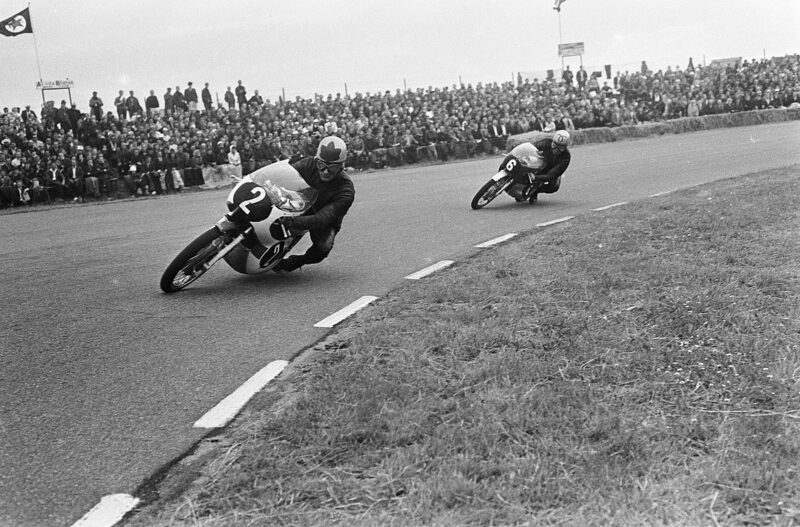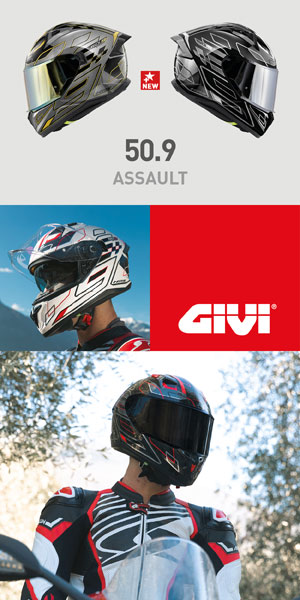Some drivers don't need to race for decades to make history. This is the case of Bill Ivy, who had a short but intense life. Today, let's look at the career of "little Bill", as beautiful as it is tragic.
It was at the age of 17 that Bill became interested in motorcycle racing. Born in 1942 in Kent, he gained experience on 50cc bikes before taking part in his first Tourist Trophy in 1962.
On the mountain, legends are made and unmade. Subsequently, he continued to race the British circuits on different machines. Ivy only progresses, and soon, is rewarded for her efforts.
In 1965, he started the Dutch Grand Prix as a wild card, where he finished 4th in 125cc on a Yamaha. Starting driver Mike Duff injured during testing in Japan. At Suzuka, the in-tune brand must find a solution; the Canadian is out of the race. So, she brings Bill Ivy off for a replacement at short notice. In 125cc, he performed well, but above all, got on the podium in 250cc. The best result of a Yamaha in these categories, over this weekend, is for him.
Naturally, Yamaha hired him in 1966, this time full-time. This is the beginning of a great story.
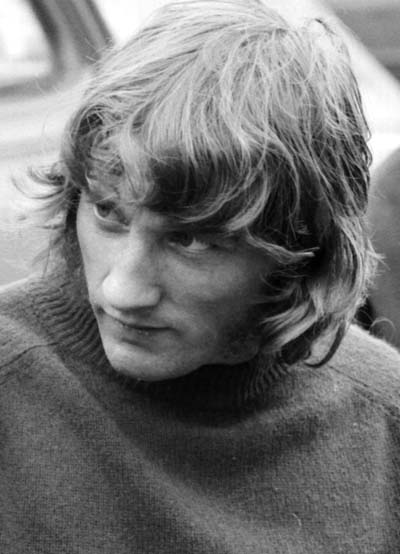
Here in 1969. Photo: Raimund Kommer
Tasked with winning the 125cc championship, he wasted no time in winning the first race of the season in Spain. Next to
Phil Read, the team is devastating. Read even helps Ivy triumph at the Assen circuit by delaying the Hondas. Then, another victory at the TT exceptionally held at the end of August. Yet, Luigi Taveri wins overall by a short lead, despite a crazy year signed by the young rookie.
No matter, the date with history is set for 1967. This time, he is entered in 125cc but also in 250cc. In the first of these classes, Bill floats, performs better than everyone else and never leaves the first two places when he sees the finish line. With eight victories in eleven races, he easily won his first world champion title ahead of Phil Read.
In the quarter-litre class, he was almost as dangerous and finished only four points behind his teammate, himself runner-up to the great Mike Hailwood. The Canadian 250cc Grand Prix is the only race he has not finished in the top three, in 19 completed rounds. The reason is interesting. Better off than Read, he wanted to let his teammate score the points for second place, and stopped in the pits. A nice gesture that will be important.
Yamaha feels dominant. Thus, in 1968, it decided to award championships to its drivers. Phil Read will have to be favored in 125cc, while the team will play for “little Bill” in 250cc. Despite astonishing speed, Bill Ivy respects the instructions. While he is the first to pass the 100 miles per hour average mark on a Tourist Trophy lap in 125cc (the famous ton), he stopped in the last loop to ask spectators what the ranking was. He complies with orders and thus lets Phil triumph.
In Brno, Phil Read won the 125cc title as predicted before the start. But one detail should be noted; due to recurring mechanical problems, this same Phil remained in contact with Bill in 250cc. We feel Read less inclined to leave victory to his teammate, and new mechanical problems for Ivy cause a headache at the end of the GP of Nations, the last round of the championship: the two are perfectly tied, with the same number of points, victories and second places.
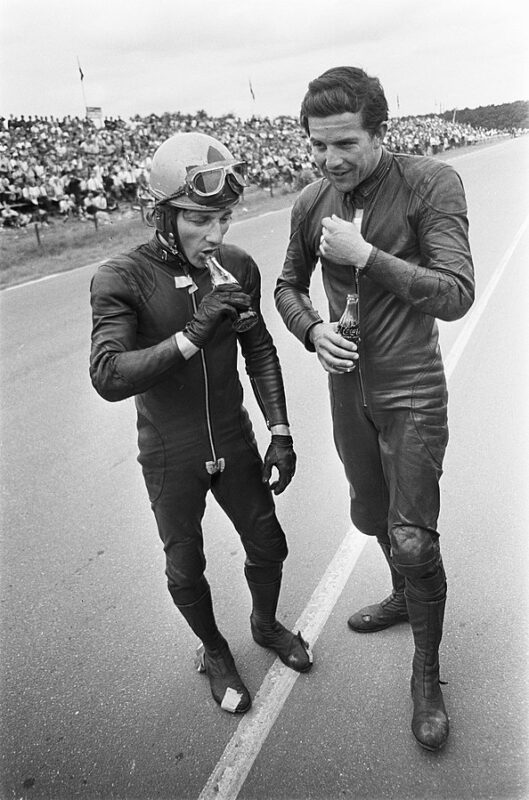
Bill Ivy (left) and Phil Read at Assen in 1968. Just a few months before the awarding of the 250cc world title which caused so much ink to flow. Photo: ANEFO
Who is world champion? La END must decide. It refers to an old rule provided for this purpose; we compare the time spent on the track when the two crossed the finish line, which happened four times during the season. For two minutes and five seconds, Phil Read is crowned despite Bill's two complaints. Terrible scenario, which almost amounts to betrayal.
At the beginning of 1969, Yamaha withdrew from Grands Prix. It was enough for Bill Ivy, at only 26 years old, to retire in order to concentrate on his career in Formula 2. The snake did not pass. In the meantime, he indulged in another of his passions, stunts for the cinema. In 1965, we could even see him in the James Bond Thunderball.
The call of the track is stronger than that. The Englishman shows good results on four wheels, but cannot resist a call from the firm Java, entered in 350cc. Surprisingly, he is very fast on his handlebars and is even on par with
great Giacomo Agostini.
But on the Sachsenring, his life changes. During the final test session, his four-cylinder engine stalls, and unfortunately, Bill is busy adjusting his helmet and goggles. He can't take the clutch in time, and ends up thrown against a wall. Without protection on his head, he was seriously injured and died only three hours later in hospital.
His death is a shock to everyone. Continental Circus. Bill Ivy was only 26 years old, and a real talent that could have propelled him to the top. Realize it; In 46 starts, he has 42 podiums and 21 victories. Huge.
Did you know the tragic story of Bill Ivy?
Tell us in the comments!
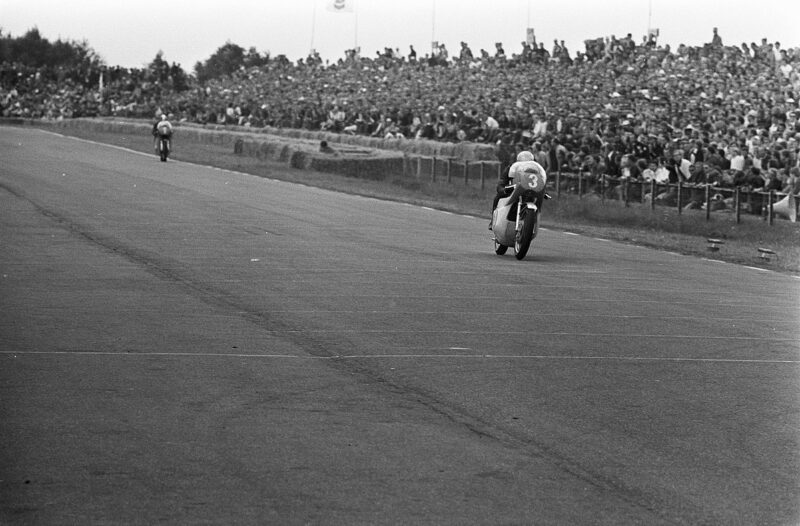
Here, Bill Ivy at the 350 1969cc Dutch Grand Prix, three weeks before his death. Yes, that’s Giacomo Agostini far behind. Photo: ANEFO
Cover photo: Bill Ivy at the 1967 Dutch GP. ANEFO










